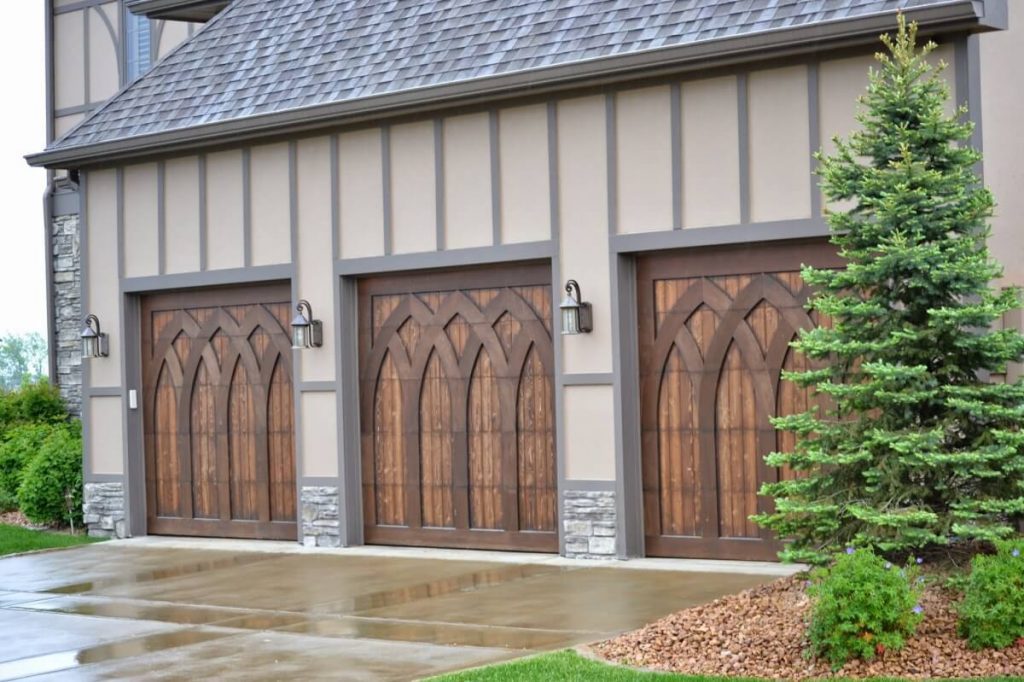Routine Maintenance Can Prevent Tragedies
Take a few minutes to inspect and test your complete garage door system. Make monthly inspection and testing a part of your regular routine. Safety is everyone’s business. Make garage door and garage door opener safety automatic in your home. The IDA recommends a Professional Safety Inspection and a Preventative Maintenance be performed at least every 6 months, and no longer than 1 time per year on the garage door and opener.
Replace Old Springs
Your garage door’s springs are arguably the most important and most dangerous part of your door. Springs wear out. When they break, injury can result. If you have an older garage door, have your springs inspected by a professional technician and replaced if needed. If your door has two springs, replace both, even if one is not broken. This will not only prevent any damage caused by the breaking of the second spring, but also keep your door working efficiently.
Check Your Cables
Visually inspect the cables that attach the spring system to the bottom brackets on both sides of the door. If these cables are frayed or worn, they are in danger of breaking, which can cause injury. Due to the dangers associated with high spring tension, these cables should be replaced only by a trained technician.
Squeaky Springs?
Springs can squeak and be noisy. This is caused by normal use and does not necessarily indicate a problem. Before calling a professional service technician, use a spray-on lubricant (recommended especially for garage doors). If the noise persists, call a professional garage door installer for service.
A Do-It-Yourselfer, Eh?
Installing a garage door can be very dangerous and is not recommended for a novice. DASMA recommends that trained door systems technicians install garage doors. If you attempt the installation by yourself, be sure to follow the manufacturer’s installation instructions carefully.
Safety Cables
If your garage door has extension springs, you need a safety cable that runs through the spring and secures to the wall or ceiling at each end. When your garage door is down, extension springs are under high tension. If the spring breaks, it may cause injury. A safety cable can keep that broken spring contained. If you have extension springs but do not have a safety cable, call your local dealer for a safety inspection.
Struggling Door?
If your door does not go up and down smoothly, you may have an unsafe condition. Even older door systems should operate smoothly. If the awkward operation continues when the door is manually operated, you may have a spring system that is out of balance. This can cause premature wear and tear on other important door components. Spring systems are dangerous and should be repaired only by trained professionals.
Consult owner’s manual for additional recommended maintenance for your models of door and opener.
Testing and Maintaining the Garage Door
Perform routine maintenance steps once a month. Review your owner’s manual for the garage door. If you don’t have a manual, look for the model number on the back of the door, or check the lock handle, hinges, or other hardware for the manufacturer’s name and request a manual from the manufacturer.
Visual Inspection
Look at the garage door springs, cables, rollers, pulleys, and other door hardware for signs of wear. If you suspect problems, have a qualified person make repairs.
Warning – Springs are under high tension. Only qualified persons should adjust them.
Garage door springs, cables, brackets, and other hardware attached to the springs, are under very high tension and, if handled improperly, can cause serious injury. Only a qualified professional or a mechanically experienced person carefully following the manufacturer’s instructions should adjust them. The torsion springs (the springs above the door) should only be adjusted by a professional. Do not attempt to repair or adjust the torsion springs yourself.
A restraining cable or other device should be installed on the extension spring (the spring along the side of the door) to help contain the spring if it breaks.
Never remove, adjust or loosen the screws on the bottom brackets of the door. These brackets are connected to the spring by the lift cable and are under extreme tension.
Lubrication
Regularly lubricate the moving parts of the door. However, do not lubricate plastic parts such as plastic rollers and plastic idler bearings. Consult the door owner’s manual for the manufacturer’s recommendation.
Door Balance
Periodically test the balance of your door.
- Start with the door closed
- If you have a garage door opener, use the release mechanism so you can operate the door by hand when doing this test
- You should be able to lift the door smoothly and with little resistance. It should stay open around three or four feet above the floor. If it does not, it is out of adjustment. Have it adjusted by a qualified service person.
Keep Area Free of Debris and Clutter
Maintain a safe area around the garage door and driving area to prevent accidents. Keep garbage cans clear of the garage door and safety eyes, and keep all areas clear for easy movement without possibility of a fall.
Testing and Maintaining the Garage Door Opener
There are routine safety and maintenance steps that you should follow once a month. Review your owner’s manual for the door opener. If you do not have an owner’s manual, look for the opener model number on the back of the power unit and request a manual from the manufacturer.
Reversal Test
Make sure your opener has a reversing feature. If a reversing feature is not present, it should be replaced. Garage door openers manufactured after January 1, 1993 are required by federal law to have advanced safety features which comply with the latest U.L. 325 standards: Contact your manufacturer or installer for additional information.
Test the reversing feature every month.
- First, test the balance of the door (see “Testing and Maintaining the Garage Door.”). If the door is properly balanced, then proceed.
- With the door fully open, place a 2” x 4” thick piece of wood laid flat on the floor in the center of the door.
- Push the transmitter or wall button to close the door. The door must reverse when it strikes the wood. (Note that the bottom part of “one piece doors” must be rigid so that the door will not close without reversing.)
- If the door does not reverse, have it repaired or replaced. Have a qualified individual adjust, repair or replace the opener or door.
Force Setting Test
Test the force setting of your garage door opener by holding the bottom of the door as it closes. If the door does not reverse readily, the force may be excessive and need adjusting. See your owner’s manual for details on how to make the adjustment. Test the reversing feature after any adjustment.
Additional Safety Devices
Many garage door openers can be equipped with additional safety devices. Consider adding a photo eye or edge sensor as an extra measure of safety to prevent against entrapment. Keep in mind that adding more safety devices will not make an old opener meet current U.L. standards.
Make sure the additional safety devices, such as photo-eyes or edge sensors, are properly installed and adjusted (see owner’s manual).
Garage Door Safety – Resources
This important information is provided by the U.S. Consumer Product Safety Commission, the National Safety Council, the Industry Coalition for Automatic Garage Door Opener Safety, Door & Access Systems Manufacturers Association International (DASMA), and The International Door Association (IDA).
If you have any questions or would like to schedule an appointment for a Safety Inspection or Maintenance, please contact our 24/7 Live Operator at Precision.































